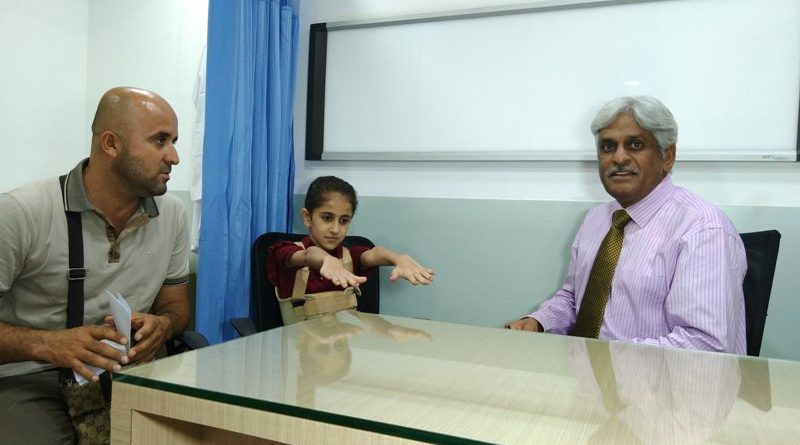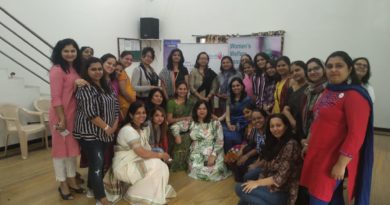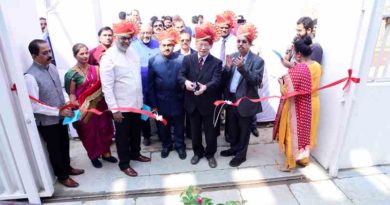11-year-old Kurdistan girl with a rare congenital spinal disorder successfully treated by Global Hospital, Mumbai
A team led by Dr Suresh Sankhla, HOD- Neurosurgery, successfully performed a complex microsurgical procedure on 11-year-old Savya Saman Ali, from Kurdistan, who was suffering from a rare condition called as split cord malformation. The patient presented with an abnormal development of spinal curvature commonly known as scoliosis since her early childhood. Lately, she had also developed difficulty in walking and was treated medically without any benefit. A prompt and effective treatment by the doctors from Global Hospital, Parel, Mumbai, gave her a new way of life.
Savya Saman Ali, a resident of Kurdistan, was a small kid when her mother noticed that she was limping while walking. Slowly, the child started developing scoliosis of the spine. Her right leg appeared shorter than her left one, which was initially thought to be the reason for walking difficulties. Even after active treatment from her doctors, her condition continued to worsen. Later, the local Neurosurgeon detected the spinal problem on x-rays and spinal MRI. There was an abnormal block of bone in the centre of the spine that was causing splitting and tethering of the spinal cord, which led to the development of scoliosis and gait difficulties in this child.
Dr Suresh Sankhla, HOD- Neurosurgery, Global Hospital, Parel said, “This patient presented with a rare congenital spinal disorder in which her spinal cord is divided in two halves by a block of bone – a condition known as split cord malformation. Spinal dysraphism is a well-known congenital spinal anomaly with a wide variety of disorders. Split cord malformation is a less common type of spinal dyspharism observed in less than 1 % children. Incidentally, Savya had an extreme variety of this malformation. In the early stages, the child is generally asymptomatic, but as the child grows, the problems due to spinal tethering become evident in the form of pain, spinal deformities, walking difficulties, paralysis, and loss of urine control.”
Dr Sankhla added, “This condition, which may occur due to maternal malnutrition, requires a surgical procedure to micro surgically remove the intervening bone or fibrous tissue and reconstruct the dural coverings of the spinal cord. This complex surgery on Savya, which lasted for 6 hours, was successfully performed on July 10. As was comfortable and had an excellent postoperative recovery, she was discharged from the hospital on 3rd day after the surgery. Her scoliosis will slowly get corrected with dedicated physiotherapy over next few months. The children whose malformations have been diagnosed and treated early, usually recover completely with minimal risks of long-term disabilities.”
Patient Savya Saman Ali, said, “Though, I could walk and do daily activities like children of my age do, I was bogged down as they were tall compared to me. They would walk properly, whereas, I would limp. I often asked my mother that why can’t I be like others? But she would console me, and assure that things will be fine. Finally, our prayers were heard, and I can also walk properly without limping. I thank doctors at Global Hospital who have helped me get back on the track. My condition is improving now, and I have been told by the doctors that soon, I will be able to completely get rid of scoliosis.”




